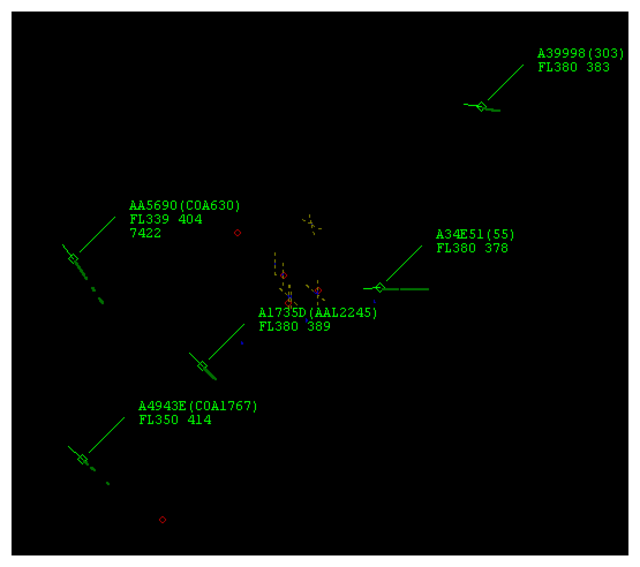Accident Probe: Fuelish Behavior
When the only tool in your bag of tricks is a hammer, every problem starts to look like a nail.
Over time, many of the features in a personal airplane cockpit have become more or less standardized. Power controls are color- and shape-coded, flight instruments consistently work the same way and when we push on the pitch control, houses get bigger. Not so much for many other controls, especially those for important systems. The Cessna 172 you learned to fly in probably had electric flaps and a fuel selector with a BOTH position. It was about as simple as simple got; the only time one needed to select an individual time was when we were going for maximum range and wanted to run a tank dry.
As we moved up to faster and more capable airplanes, their various systems required familiarization if not specific training. Flaps, landing gear and especially avionics all work slightly different from what we may have become accustomed. That's why we get transition training when upgrading our ride, with the idea of becoming as familiar with those differences as we can. One reason for such training is to obtain maximum utility from the airplane.
Another reason is to ensure we can safely and reliably operate the new, more capable airplane. It's one thing, for example, to execute the manual gear extension checklist but it's another to have done it before and know how.
Equally insidious is transferring technique and/or systems knowledge from one airplane to another. "Well, I know how the electrical system on the WhizBang WB30 works; why should the Flying Flivver XXX be any different?" Or turning the fuel selector one notch to the right to put it on BOTH, when a different airplane's construction turns it to OFF.
Pilots who fly different airplane types know that properly using the checklists will save their butt when something soils the bed. That's especially true when we think the problem is one thing but it turns out to be another.
Background
On August 14, 2016, at about 1115 Central time, a Piper PA-31-325 Navajo was substantially damaged when it impacted terrain near Northport, Ala. The private pilot and five passengers were fatally injured. Visual conditions prevailed; an IFR flight plan had been filed. The flight departed Kissimmee, Fla. (KISM), at about 0855 with Oxford, Miss., as its destination. The airplane's fuel tanks were topped off with 134 gallons of avgas before the accident flight. The pilot reported five hours and 10 minutes of fuel aboard on his flight plan.
The airplane leveled at its cruise altitude of 12,000 feet MSL at 0915. At 1059, the pilot reported a failure of the right engine fuel pump and requested a diversion to the nearest airport. About 13 miles from an airport in Tuscaloosa, Ala., the pilot reported the airplane "lost both fuel pumps" and there was "no power." The airplane descended on final approach until it impacted trees about 1650 feet from the runway's approach end.
Investigation
The airplane impacted trees and the ground, coming to rest upright at the end of a 250-foot-long debris path. All major components of the airplane were accounted for at the scene. A post-impact fire ensued.
A flight instructor who accompanied the pilot on several trips as a safety pilot stated he did not provide any multi-engine training to the pilot and believed the pilot had not received any training in the accident airplane. The flight instructor did not practice any single-engine operations or emergency procedures with the pilot in the accident airplane since they always flew with passengers.
Records indicate the pilot had experienced maintenance issues with the airplane's right engine fuel pump. According to maintenance records, the right engine-driven fuel pump and right engine boost pump were replaced less than a month earlier. The flight instructor spoke with the pilot after the flight to KISM on August 10 and later reported the pilot stated "everything was fine...."
The airplane's fuel system included four tanks, two in each wing, for a total fuel capacity of 192 gallons, 183.4 gallons of which is usable. The fuel boost pumps are operated continuously and were activated when the master switch was turned on. They operate until the master switch is turned off or their circuit breakers are pulled. The flight instructor stated they would check the fuel selectors and verify that they were on the inboard fuel tanks before takeoff. Once in cruise flight, they would switch to the outboard fuel tanks, use that fuel and then switch to the inboard tanks.
The left- and right-engine fuel selector levers were found in the outboard tank positions. The left and right fuel shutoff valves were found in the ON position (not shut off); the crossfeed selector was found in the OFF position. Both four-blade propellers were found in the unfeathered position. Two each of their blades were bent aft while the other two remained straight.
There were no pre-impact anomalies noted with the right engine-driven fuel pump. The left engine-driven fuel pump exhibited low outlet pressure. When the pump's pressure was adjusted, it passed the cruise power flow test requirements. There were no anomalies noted with the right engine's electric fuel pump aside from post-impact fire damage. The left engine's electric fuel pump also exhibited no anomalies precluding normal operation.
Using the fuel consumption rate of 23 gph per engine noted in the pilot's flight log for the accident flight, the fuel endurance for the outboard fuel tanks was about one hour and 45 minutes.
Probable Cause
The NTSB determined the probable cause(s) of this accident to include: "A total loss of power in both engines due to fuel starvation as a result of the pilot's fuel mismanagement, and his subsequent failure to follow the emergency checklist. Contributing to the pilot's failure to follow the emergency checklist was his lack of emergency procedures training in the accident airplane."
Since the pilot had previously demonstrated good fuel-management technique, it's dumbfounding he couldn't manage switching tanks at altitude. He also didn't properly secure the engines to extend the deadstick glide.
It's clear the pilot failed to execute any kind of a checklist when the right engine ran out of fuel, presumably accepting that the new pump had failed and there was no way to fix it. (Was he slightly hypoxic?) Perhaps he reverted back to a previous airplane's systems, one equipped with a BOTH position?
‘Highly Preventable'
According to NTSB Safety Alert 067, Flying on Empty, August 2017, "From 2011 to 2015, an average of more than 50 accidents per year occurred due to fuel management issues. Fuel exhaustion accounted for 56% of fuel-related accidents while fuel starvation was responsible for 35% of these accidents.
"Fuel exhaustion is running out of fuel whereas fuel starvation is having fuel onboard but it doesn't reach the engine for reasons such as a blockage, improperly set fuel selector, or water contamination....
"Pilot complacency and overestimation of flying ability can play a role in fuel management accidents.
"Running out of fuel or starving an engine of fuel is highly preventable. An overwhelming majority of our investigations of fuel management accidents—95%—cited personnel issues (such as use of equipment, planning, or experience in the type of aircraft being flown) as causal or contributing to fuel exhaustion or starvation accidents. Prudent pilot action can eliminate these issues. Less than 5% of investigations cited a failure or malfunction of the fuel system."
Aircraft Profile: Piper PA-31-325 Navajo
Image: Bidgee
Engines: Lycoming TIO-540-F2BD
Empty Weight: 4099 lbs.
Maximum Gross Takeoff Weight: 6500 lbs.
Typical Cruise Speed: 220 KTAS
Standard Fuel Capacity: 183 gal.
Service Ceiling: 24,000 feet
Range: 899 nm
VSO: 70 KIAS
This article originally appeared in the August 2018 issue ofAviation Safetymagazine.
For more great content like this,subscribe toAviation Safety!






